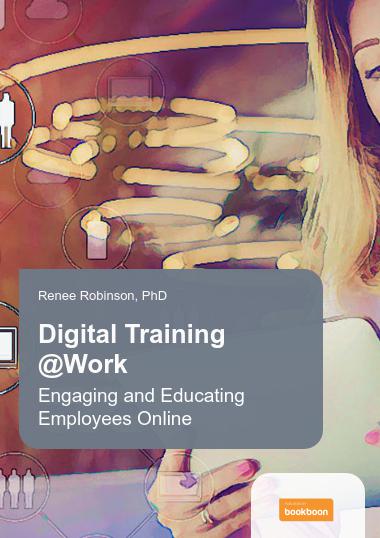The 7 benefits of digital learning

As we enter the fourth industrial revolution, technology has changed many aspects of the modern workplace such as how we work, how we communicate and even how we plan our weeks. But it would appear that one vital component to professional life is lagging behind: Digital Learning.
Many companies know the benefits of a professional environment with a focus on upskilling and growth yet continue to only offer their employees learning and development opportunities through costly and time-draining classroom-based training rather than making learning more effective by combining it with digital learning.
At this point in time, the benefits of a blended learning approach prove that in order for employees and businesses alike to keep up with the ever-changing demands of the modern and future workplace, those in charge of learning must take action and go digital. Let’s look at 7 of those benefits now.
Meet more learning needs with a variety of digital content
Classroom training is still a great way to foster a collaborative learning environment but sheer logistics of learning from a classroom make it difficult to cater learning to the needs of many employees. Digital learning is not limited in terms of the time it takes to learn and combining it with face-to-face training allows companies to provide a broad range of content making learning opportunities virtually endless. Meeting a variety of learning needs and styles allows every employee to feel that their learning is being prioritised and keeps employees motivated and engaged as they work towards their personal goals within the wider context of the company.
Engage more learners regardless of position or skill level
No employee learns at the same speed or in the same way. The most impactful learning takes place when it is presented in a way that caters for everyone in a company regardless of skill level or position. With digital training, employees have the flexibility to engage in learning that is relevant to their position at their own speed. In order to achieve a collective uptake in learning, every member of an organisation, from manager to assistant, from CEO to specialist, must have equal access to relevant learning materials that suit their specific needs.
Make learning at the point of need flexible and accessible
Just like employees should not be limited in terms of content and learning style, they should not be shackled to their work desktop or an Internet connection in order to develop their skills.
Because many learners prefer to do their learning on the go such as reading an eBook during a morning commute or listening to an audio file at the gym. Digital learning takes advantage of learning at the point of need by providing downloadable, mobile friendly content.
Ensure learners get the newest content with frequently added and updated materials
Social media, news and entertainment platforms tap into the basic human need for novelty by continuously updating and adding new content. Digital learning follows a similar model by maintaining quality with regularly updated and newly added content which will engage and intrigue employees far more than recycled information they have already consumed.
Promote self-directed, lifelong learning with recommended content
In the same way that entertainment streaming platforms do, the best digital learning platforms use data-driven algorithms to make recommendations on topics and material learners might like based on their previous searches. Recommended content ensures users are consuming material that is relevant to them which makes them more likely to seize the opportunity for continued learning. Recommended learning encourages increased engagement in learning and takes the guesswork out of the hands of learning professionals.
Save costs by eliminating expensive classroom learning
While it may be the most traditional way to teach employees new skills, making learning 100 percent based on face-to-face lessons, isn’t the most effective in terms of budget. eLearning provides many of the benefits of classroom training at a fraction of the price. With digital learning, businesses save on many expenses such as employee travel costs, space rental as well as the cost of the trainer or course itself.
According to a report by the Centre of Economic and Business Research, time spent away from the office is expected to cost the UK economy an average of £21bn annually by 2020. The flexibility and mobility of digital learning allow employees to take their skills development into their own hands and decide when, where and how they will learn. (1)
Allow learners to quickly apply new skills to their real lives
The most quality learning experience is one that quickly gives learners the tools they need to apply their new skills to their real life. Combining easy-to-use, bite-sized digital learning materials with a company’s current training provides employees with a clear and concise training experience and a faster turnaround period on learning or improving skills.
The variety and flexibility that comes with digital training encourages unlimited learning opportunities, engages more learners and saves costs by providing learners with actionable, in-depth training they can learn and apply in their own time.




